Depending on where you plan on diving, chances are that you will wear a wetsuit or, in some cases, even a dry suit. Both increase your wrist size substantially, which is why a dive watch usually features a deployant clasp with a divers’ extension, or even comes with an extra strap piece that can be attached to the strap buckle when worn over a dry suit (e.g. the unique Citizen Promaster 1000, which has been previously reviewed by WatchTime). A regular clasp extension usually doesn’t add enough length in those instances.
Now, regardless of whether you are a “strap person” or “bracelet person,” both options have their advantages and disadvantages: the deeper you dive, the more pressure your body and suit will experience. Which basically means that a neoprene suit that starts out being very tight suddenly becomes loose — and with it, your dive watch. An easily adjustable clasp extension, such as that offered with the Seiko Marinemaster, or the rather complex clasp of the Rolex Sea-Dweller Deepsea could be the answer to that problem (at least for wetsuits), but I have rarely witnessed a diver constantly adjusting his or her watch manually when diving.

Traditional ridges, used as a more flexible element for straps (as were introduced on many Seiko dive watches in the late ’60s/early ’70s), are therefore not only much cheaper to produce, but theoretically also better suited for automatically compensating for the effects of pressure at different depths. This is also why a large number of today’s dive instruments are still equipped with these iconic style elements. There is a disadvantage tom them, however: the more robust a rubber strap has to be, the stiffer it normally is and thus less flexible (which is why the ultra-robust Citizen could have easily done without the ridges). This is as it should be, because no one should fear losing a luxury watch over something as preventable as a broken strap.

The solution? A combination of both: early Doxa Subs, for example, featured a spring-loaded bracelet element. The first Omega Seamaster Ploprof had a very soft (and thus flexible) rubber strap piece as an extension for the watch’s mesh bracelet. More recently, in 2012, Tudor introduced with its Tudor Pelagos not only one of the most interesting dive watches available, but most likely also the best of all worlds in terms of divers’ extensions: a robust titanium bracelet with a traditional divers’ extension that additionally incorporates a flexible spring loaded element that automatically adjusts the bracelet. Tudor’s video for the watch (below) shows you how it works.
Ideal, right? Unless you’re diving with a dry suit, of course…
This article was originally published in 2014 and has been updated.
If you’d like to know more about dive watches, download our “Dive Watch Timeline” from the Watchtime Shop!

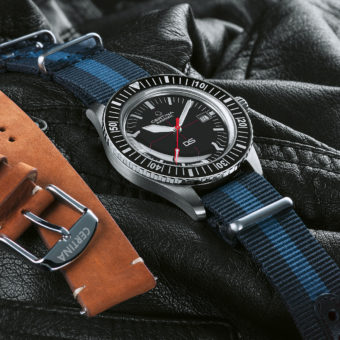
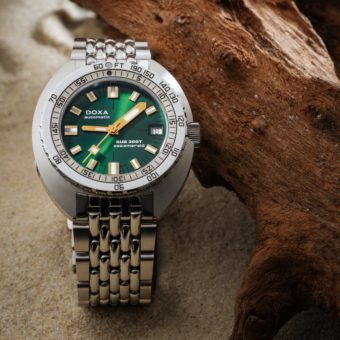
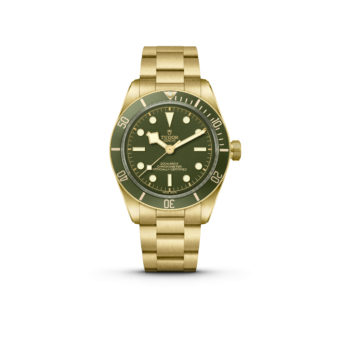
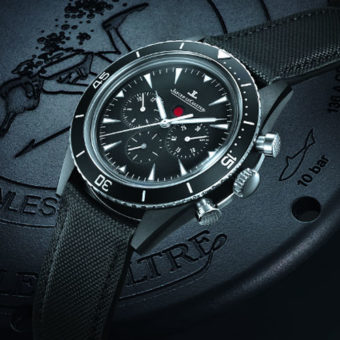
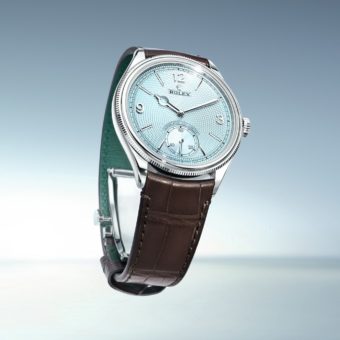
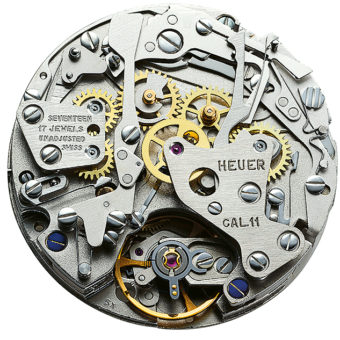
Works great….until sand gets into the spring area. And it does. Then those springs start to grind and it doesn’t retract properly and you have to hand clean the clasp and shake the sand out after every dive. Eventually you sell it or put it on a NATO. Like I did with mine.
as a long fan of dive watches I can say there are soo many bad designs on the market, ….
my 2 favs are the Tudor Pelagos system and the Doxa 1500T II system , the Rolex glidelock is inferior to both of these. the new omega diver extension is also quite nice, but still inferior to the Pelagos and 1500T
That clasp is just adding Rube Goldberg machine to an otherwise simple task. Well designed dive straps are more than adequate. I have never had a pre-tensioned dive strap become loose at depth.
Personally I dive in a rubber NATO. Pre-tensioned before the dive it acts like a waffle strap and it gives me additional security if a strap pin comes loose.
Clearly Tudor has put a lot of thought into this very clever solution for divers, well done all !!!
Except for the typos, an excellent article. I find dive watches to be my favorite, despite barely getting the watches wet. The current clasp used by the Rolex Submariner (and my Ginault Ocean Rover) is my favorite. Why? Ease and speed of taking on and off, security on the wrist and overall comfort and appearance. I like the idea of a rubber strap with this type of clasp or a butterfly clasp. A belt buckle clasp is slow and awkward to use, imo.
What’s a deployment clasp? Is it a clasp that moves troops around the country?
Why wouldn’t you use a deployant clasp instead?
Hi Andy, sorry for that and thanks for noticing!
As a diver for many years i find the rubber strap a better way to go in any dive, wet suit or not.
I have a Citizen Promaster Air Diver that has incorporated a ratcheted diver’s extension into its titanium bracelet. Very cool.
Very good,very interesting article.I did not know why the rubber dive straps were made that way.An article on the old tropic dive straps would also be interesting.